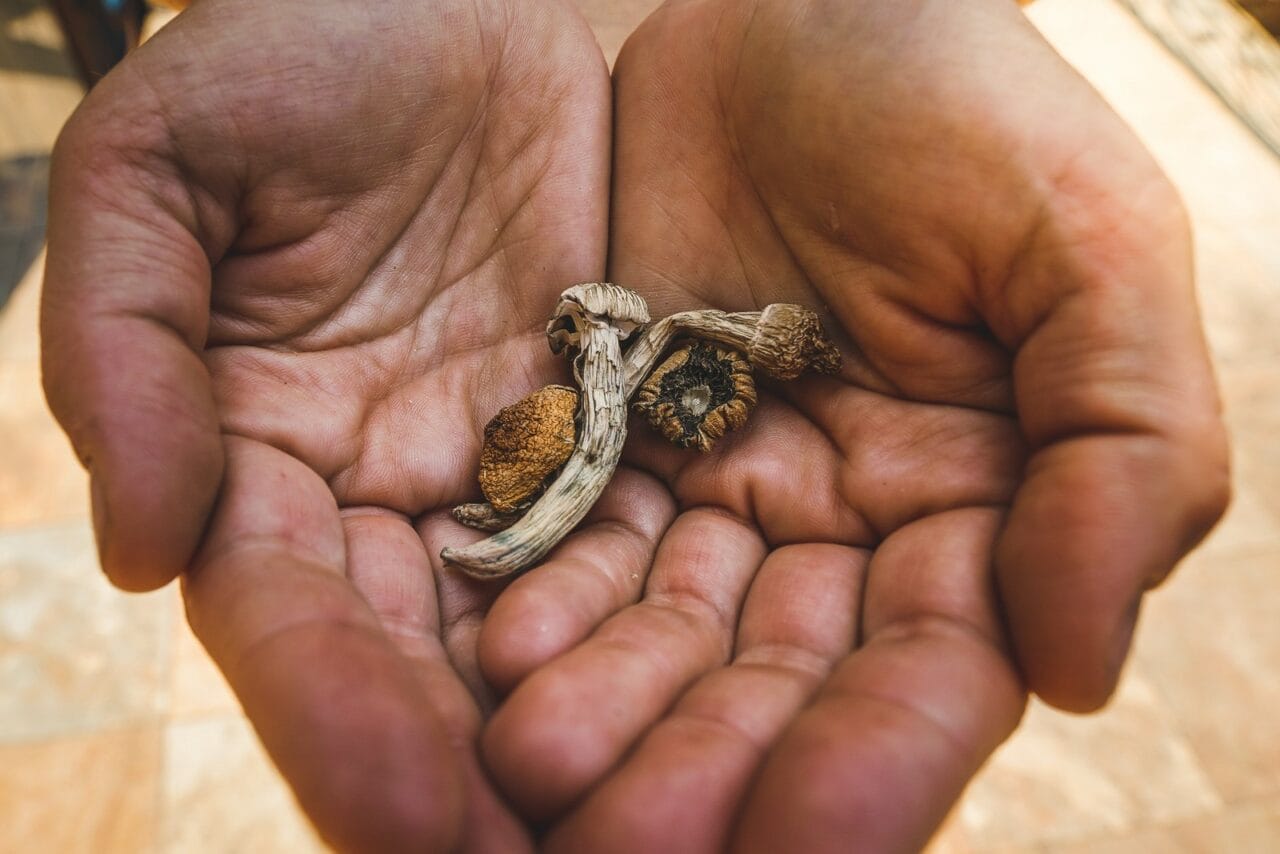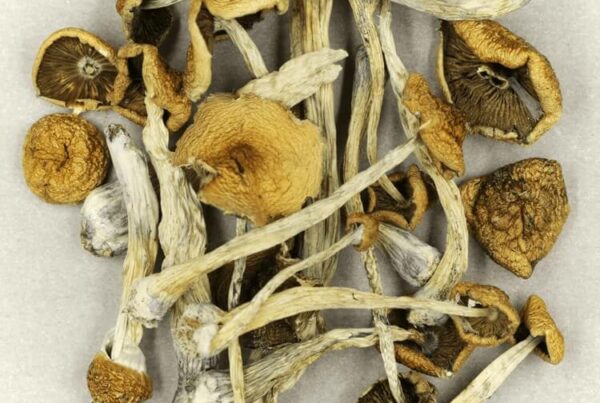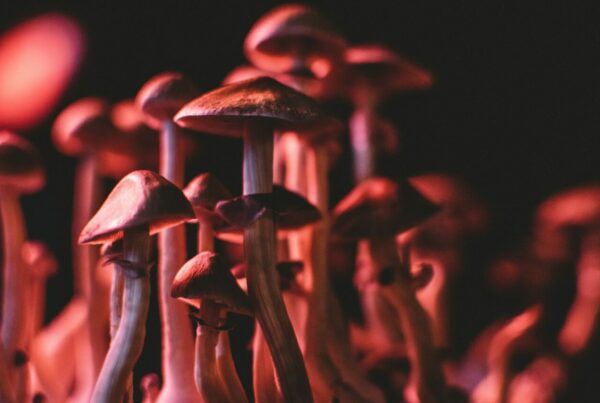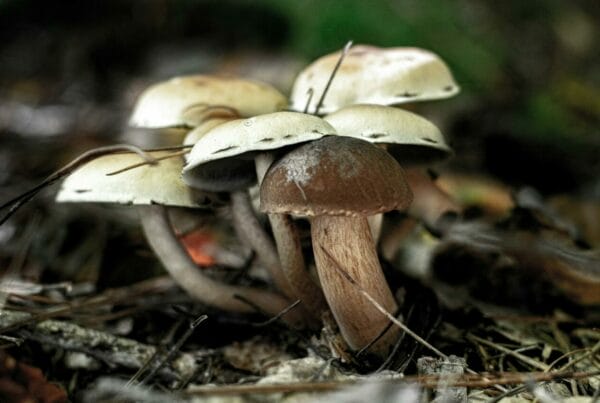Dried shrooms have experienced a surge in popularity as a psychedelic substance. Perhaps you’ve come across them and considered trying them out, but you’re unsure if they’re the right fit for you.
Many novices often feel uncertain about the best psychedelic substance to start with. We’re here to provide insights on how dried mushrooms stand out from other options and why they could be an excellent choice for your initial psychedelic experience.
[toc]Key Takeaways:
- The active ingredient in Psilocybe, it is the most studied psychedelic in terms of mental health due to its safety, minimal potential for misuse, and brief duration of effects.
- Dehydrated Psilocybe is the most common form, as it retains its potency and has a longer shelf life.
- Psilocybin interacts with the serotonin 5-HT2A receptor, resulting in heightened perception, vivid imagery, complex hallucinations, and time distortion.
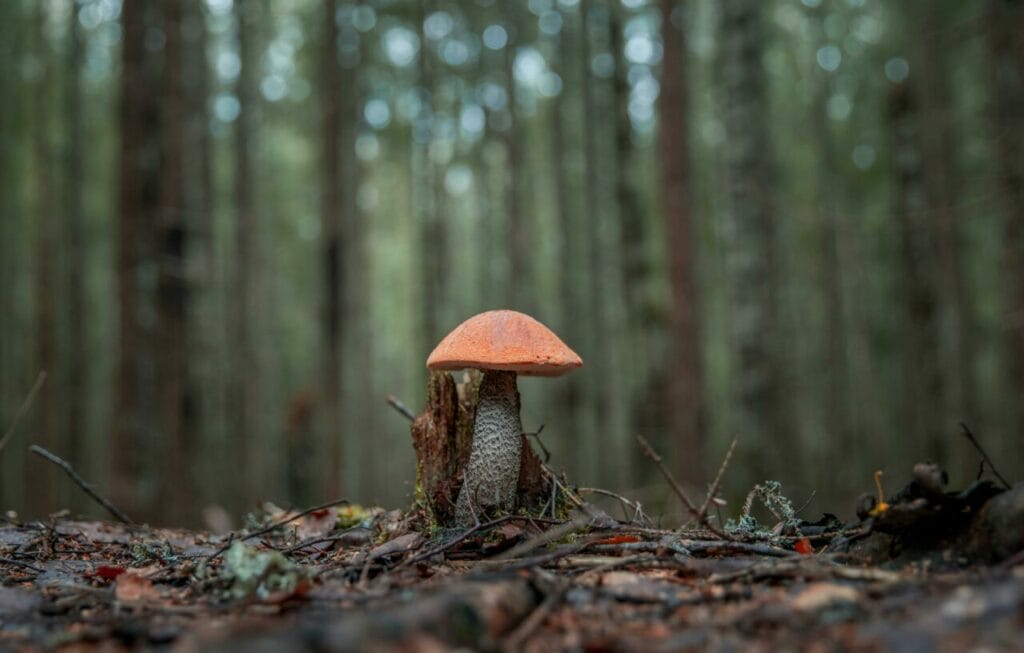
Psilocybin Mushrooms: A Journey into the Psychedelic Fungi World
A psilocybin mushroom is the home of psychoactive compounds, psilocybin and psilocin, which are responsible for the hallucinogenic effects experienced by users. The most famous species—Psilocybe cubensis—has a light brown cap, dark spots, and a distinct shape. Several other species within the Psilocybe genus also generate these compounds.
Some poisonous mushrooms that carry harmful toxins resemble Psilocybe’s look, which is why we strongly recommend against mushroom foraging.
Historically, many cultures in Central America incorporated mushrooms into their spiritual rituals. In the present day, scientists are exploring their potential use in treating mental health issues, including substance abuse disorders.
Preparation and Preservation: The Dried Form
The most commonly found form of Psilocybe is the dried variety. Dehydration is essential to preserve the mushroom’s potency and extend its shelf life. Fresh mushrooms are usually dried using a food dehydrator or placed on a wire rack in a cool, dry area.
This process is critical for removing excess
Dried magic mushrooms can be stored for future use. However, they must be kept away from moisture that could encourage mould growth and deteriorate the active compounds.
Follow this step-by-step guide to dry and store magic mushrooms effectively:
- Use a suitable food dehydrator or a wire rack to thoroughly dry the mushrooms.
- Put them in airtight containers to keep their potency and guard against excessive moisture.
- Store in a cool, dry place to preserve their psychoactive properties.
- Avoid exposure to direct sunlight to prevent degradation.
- Inspect regularly for mould or dark spots, which are indicators of spoilage.
Comparing Psilocybe Cubensis with Other Psychedelics
Aside from dried mushrooms, various psychedelic products are available online. These substances impact the body differently and require different modes of consumption. Some of these products are considered classic hallucinogens, like psilocybin.
| Substance | Source | Physical Effects | Research Applications | Duration | ||||||||||||||||||||
| Psilocybin | Found naturally in over 200 types of mushrooms | Enhanced perception, hallucinations, altered time sense | Depression, Anxiety, PTSD, OCD, Cluster headaches, Alzheimer’s disease | 4-6 hours | ||||||||||||||||||||
| DMT | Occurs naturally in plants like Psychotria viridis | Intense spiritual experiences, visions, auditory hallucinations | Depression, Addiction | 15-30 minutes | ||||||||||||||||||||
| LSD | Synthetic, first made by Albert Hofmann in 1938 | Heightened emotions, altered perception, auditory and visual hallucinations | Depression, Anxiety, Addiction, Cluster headaches, Alzheimer’s disease, Tourette’s syndrome, ADHD | 8-12 hours | ||||||||||||||||||||
| MDMA | Synthetic, initially synthesized by Anton Köllisch in 1912 | Increased release of serotonin, dopamine, norepinephrine, and possibly oxytocin | PTSD, Autism spectrum disorder, Obesity, Narcolepsy, ADHD | 3-6 hours | ||||||||||||||||||||
| Ketamine | Synthetic, first created by Calvin L. Stevens in 1962 | Anesthetic, produces psychedelic effects at high subanesthetic doses | Depression, Bipolar disorder, Anxiety, Suicidal tendencies, Addiction, Autism spectrum disorder, Chronic pain, Arthritis, Fibromyalgia | 1-3 effects: Dilated pupils, increased heart rate, and nausea are some of the physical effects. How does the Human Body Respond?The working mechanisms of each substance are theoretical in nature, derived from observed effects. These theories shed light on how the substances may exert their effects, but they do not provide a conclusive explanation of the underlying processes at play.
How Do Psychedelic Mushrooms Affect You?The psychological and physical reactions can greatly vary based on dosage, environment, and the individual’s mental condition. Regular experiences associated with the consumption of psychedelic mushrooms include:
Shrooms are generally safe to consume when used responsibly. However, a lack of proper preparation can result in unpleasant experiences for some users. While experienced users may find larger doses effective, newcomers who try to consume high amounts may experience a “bad trip.” Managing your experience with this substance is straightforward. Choose a calm, quiet environment and enlist the help of a sober “trip guide” for support. A Preferred Option Over Other SubstancesHealthcare professionals often prefer dried shrooms due to their longer shelf life and easy dosing. Their shorter duration and more manageable intensity make them a suitable option for those new to psychedelic therapy. They are also more natural than other synthetic hallucinogens, DMT being the exception. Distinguishing the benefits of different compounds can be challenging, as many clinical trials produce similar results, particularly between LSD and psilocybin. The latter is the most extensively researched psychedelic for mental health issues, largely due to its excellent safety record, low risk of abuse, and short perceptual trips. Health Benefits
Choose Your Desired Dried Mushrooms and Embark on Your JourneyThanks to the convenience of online services, it’s now easier than ever to discover these products. Make a purchase and have it delivered right to your home.
Choose Properly Dried Magic Mushrooms for Their Known Effects and BenefitsDried mushroom products provide a unique and powerful psychedelic experience, comparable to LSD, MDMA, DMT, and Mescaline. They are renowned for their introspective effects and potential therapeutic benefits. Being the most researched compound, it’s easier to understand its advantages and learn how to use it effectively. Micro Zoomiez Canada offers a variety of these fungi, ranging from highly potent strains to those suitable for beginners. Frequently Asked QuestionsWho can benefit from (or should avoid) psychedelic therapy?If you are dealing with depression, anorexia, alcohol addiction, want to quit smoking, or are facing a terminal illness, this therapy can be helpful. However, if you or your family have a history of schizophrenia, psychosis, bipolar disorder, or borderline personality disorder, it’s crucial to consult your doctor before starting this therapy. What should you expect from psilocybin therapy?Psilocybin therapy can be a profound experience with lasting effects. The therapeutic journey encompasses three main stages: {“ordered”:true} –>
Are mushroom products more affordable compared to other substances?Dried mushrooms are generally more affordable than LSD products. For example, you can buy 3.5 grams of dried mushrooms for around $20. In contrast, the cost of LSD in gel tabs varies depending on the dosage. For instance, six tabs with a strength of 100 micrograms each could potentially cost about $90. |

